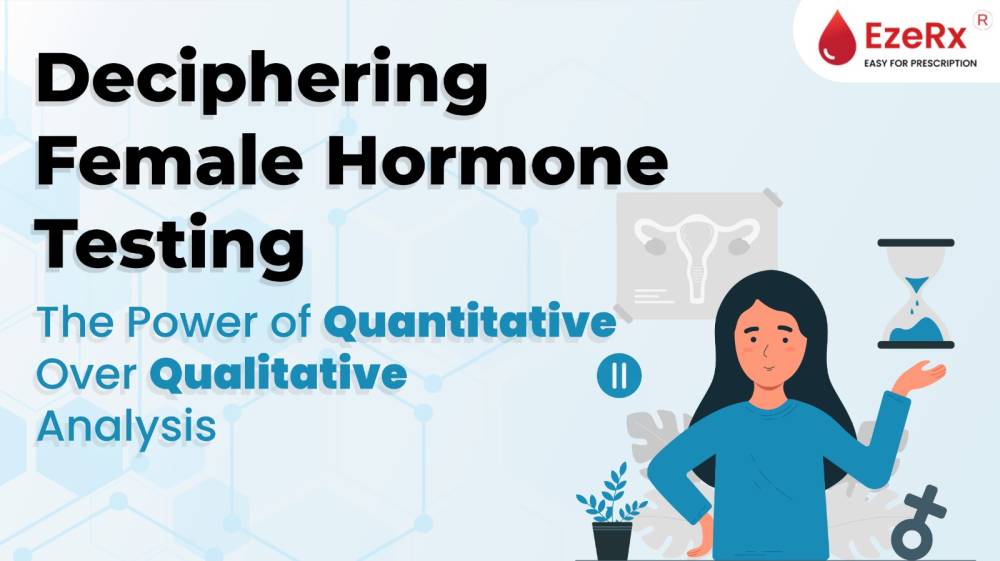
Reproductive health of a woman is one of the most important health concerns. Many women face complexities like irregular periods and fertility issues. One of the major reasons for this could be hormonal imbalances. According to the National Women's Health Survey 2022, it was found that 31% of women are experiencing at least one menstrual disorder in their lifetime which includes irregular periods, heavy bleeding, or painful cramps. According to the US report of the Centers for Disease Control and Prevention (CDC), 1 in 8 couples are having difficulty getting pregnant.
EzeRx aims to bring medical care closer and easier to the patient and their physicians by developing and manufacturing advanced medical devices and providing them with innovative solutions with a holistic management approach.
Hormones are an integral part of women's reproductive health. Hormones like LH and FSH regulate the menstrual cycle and ovulation. Hence, hormone testing is really important which can be done qualitatively as well as quantitatively.
LH & FSH are glycoprotein hormones produced by the pituitary gland at the base of the brain. These hormones work together to ensure reproductive health in a woman.
LH (luteinizing hormone) - LH controls the menstrual cycle. It stimulates the release of eggs from the ovary. This is called ovulation.
LH testing is used to find the cause of infertility and to track ovulation. You need this test if you are unable to get pregnant and your menstrual periods are not regular. Women aged 45 or above do not need this test because high levels of LH or FSH are a normal sign in them and they are approaching menopause.
The normal range of LH falls between 2-12 pg/ml. Lower than normal levels of LH in women can be due to missed periods, extreme exercise, stress, malnutrition, and underweight. A higher-than-normal level of LH means that your ovaries are not working properly.
FSH (follicle-stimulating hormone) - FSH plays a crucial role in sexual development and fertility in women. It stimulates the growth of eggs in the ovaries and prepares them for ovulation. FSH testing is used to find out when a woman is most likely to get pregnant and to check the functioning of the ovaries. It also helps in finding the cause of infertility.
The normal range of FSH falls under 3-10 pg/ml. Lower than normal levels of FSH in women may be due to rapid weight loss and extreme exercise. Higher than normal levels of FSH in women may be due to premature menopause.
These are two methods of hormone testing. Qualitative methods can only tell you the high or low level of your hormone which might be insufficient to know the exact cause of the problem. On the other hand, the quantitative method can give the exact value, e.g. 2 pg/ml. It measures the concentration of hormones like LH and FSH in picograms per milliliter (pg/ml). It provides precise value for better treatment.
According to a 2021 research paper published in the Journal of Clinical Endocrinology & Metabolism, it was found that a combination of quantitative hormone testing increases 20% accurate diagnosis as compared to the qualitative method.
EzeRx focuses on preventive measures. Our flagship device, EzeCheck, is a non-invasive hemoglobinometer, that has detected anemia in more than 5 lakh people. On the other side, one of upcoming product offers a quantitative testing of hormones in women. One of the components of this is about to be launched in the market which will test LH & FSH that will empower women to make informed decisions about their reproductive health.